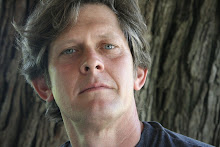
In the abstract, my neighborhood is perfect for walking.
A major university is 5 blocks away. A grocery store is 4 blocks in the other direction; a park and zoo just beyond that. Restaurants, a pharmacy, an elementary school, retail shops, churches, bars, and liquor stores – a veritable smorgasbord of life’s basic necessities.
But there’s one big problem.
Its completely unwalkable.
According to my neighborhood’s walkscore (see previous post), the area around my house should be moderately walkable. The density sets the stage. Approximately 30,000 people occupy the real estate (during the day) within a mile of my home. But with very few sidewalks, and even fewer crosswalks, getting from here to there on foot becomes entirely impractical.
Over the past 50 years, neighborhoods have been planned as if pedestrians do not exist. Planners and politicians, aided and abetted by architects and engineers I might add, have orchestrated land development with the assumption that the car is the only viable means of transportation, the silver bullet, the one-size-fits-all solution.
That predisposition brings us to where we are today: Sprawl - even in the midst of dense urban development. And walking, as a means of transportation, has been forgotten.
The university chronically complains about a lack of parking. Yet my neighbors (and in fact my Dutch roommate who is accustomed to walking) drive the 5 blocks to campus and park there instead of taking a 10 minute stroll.
Why? Because lack of any planning for pedestrians has created an urban frontier. Walking in this environment means taking your life in your own hands. Pedestrians must share the road with zooming cars (driven by distracted cell-phone yappers) and race across major thoroughfares without the benefit of crosswalks or overpasses.
In fact, in a current “improvement” project on Hardy Street at the edge of campus, crosswalks have been removed with none added. The local Department of Transportation came up with a design that widened the roadway and removed a couple of intersections effectively channeling the traffic and increasing the average speed noticeably. With restaurants, coffee shops, bookstores, campus parking, and even a dormitory across the street, pedestrians now have to run for their lives with no crosswalks in sight. The photo above is of just that.
A few weeks ago, I was in a conversation with a couple of women on the university track team. I suggested that the team be housed in the dorm across the street. Those who survive the semester without being hit by a car keep their scholarships. “Yeah,” one girl replied laughing, “that’s how we can hold tryouts!” They knew what I was talking about.
The real consequence of America’s addiction to the automobile (my friend Doug Michels of Ant Farm fame called it “autonationalism”) is that we create problems that did not exist before.
Sprawl related traffic jams and long commutes suck up time, energy, and money. Same applies in a densely developed area when you are forced to drive to your next destination just around the block.
Urban space is eaten up (and heated up) by too many parking lots. Modern car-centered zoning regulations result in stretching out the space between buildings to accommodate parking making the surrounding area even less walkable.
Sprawl related traffic jams and long commutes suck up time, energy, and money. Same applies in a densely developed area when you are forced to drive to your next destination just around the block.
Urban space is eaten up (and heated up) by too many parking lots. Modern car-centered zoning regulations result in stretching out the space between buildings to accommodate parking making the surrounding area even less walkable.
Public transportation of any kind is not viable when the metro stop is inaccessible by foot traffic. Lack of bus or train service adds inconvenience on top of inconvenience to the traffic weary commuter and would-be walker alike.
Studies have shown that people living in non-walkable neighborhoods are on average more obese, causing or exacerbating many health problems.
Maybe one of the most tragic aspects of an unwalkable neighborhood is its negative impact on our culture. When driving, there are only two ways to communicate to your neighbor – wave or flip them off! Walkable neighborhoods, by design, offer unlimited opportunities to meet and get to know your neighbors on a more personal level. In an unwalkable neighborhood, people generally know each other by their cars. Not much of a cultural exchange there.
As the trend of sprawl plays out, many are coming to a greater awareness of the inherent problems. The benefits of walking are many – I’ve just outlined a few. Here's a site for more info on walking (and biking) in neighborhoods:
Maybe one of the most tragic aspects of an unwalkable neighborhood is its negative impact on our culture. When driving, there are only two ways to communicate to your neighbor – wave or flip them off! Walkable neighborhoods, by design, offer unlimited opportunities to meet and get to know your neighbors on a more personal level. In an unwalkable neighborhood, people generally know each other by their cars. Not much of a cultural exchange there.
As the trend of sprawl plays out, many are coming to a greater awareness of the inherent problems. The benefits of walking are many – I’ve just outlined a few. Here's a site for more info on walking (and biking) in neighborhoods:





No comments:
Post a Comment